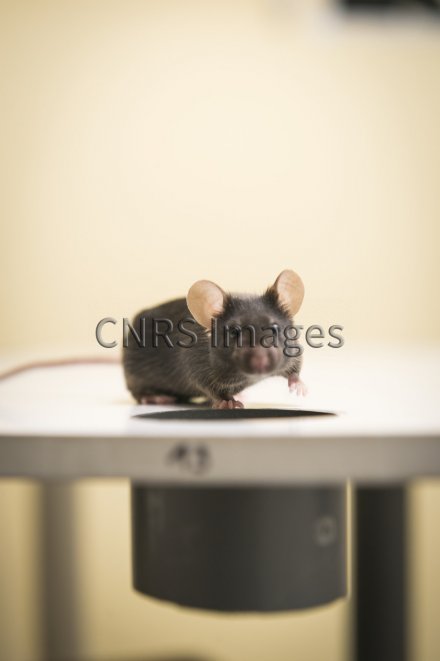Production year
2017

© Cyril FRESILLON/CRCA/CNRS Images
20170048_0042
Mouse during an exploratory phase in a Barnes maze. The maze has 20 holes, with only one leading to a refuge. The mouse is first placed in the middle of the maze using a beaker. It will quickly try to shelter due to its aversion to the brightly lit environment. The mouse completes several sessions to test its capacity to find the refuge identified the first time again. After the learning phase, the position of the exit hole may be changed to evaluate the animal’s capacity to take on board a change to the rule. This makes it possible to identify any problems with behavioural flexibility. Overall, these successive tests can be used to study the learning capacities and spatial memory of animals, and highlight potential problems with these processes among different mouse lines, including in Alzheimer’s disease models.
The use of media visible on the CNRS Images Platform can be granted on request. Any reproduction or representation is forbidden without prior authorization from CNRS Images (except for resources under Creative Commons license).
No modification of an image may be made without the prior consent of CNRS Images.
No use of an image for advertising purposes or distribution to a third party may be made without the prior agreement of CNRS Images.
For more information, please consult our general conditions
2017
Our work is guided by the way scientists question the world around them and we translate their research into images to help people to understand the world better and to awaken their curiosity and wonderment.